Turkish Pottery and Ceramics: A Timeless Art Form Steeped in Tradition
Turkish pottery and ceramics represent a centuries-old artistic tradition that has flourished in the region for millennia. With its exquisite designs, vibrant colors, and intricate craftsmanship, Turkish pottery stands as a testament to the rich cultural heritage and artistic prowess of the Turkish people. This comprehensive exploration delves into the history, techniques, and significance of Turkish pottery and ceramics, celebrating this timeless art form that continues to captivate admirers worldwide.
Historical Origins: Tracing the Roots of Turkish Pottery
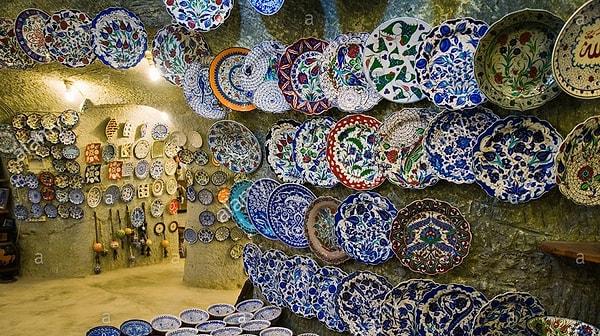
The origins of Turkish pottery can be traced back to the Neolithic period, with archaeological evidence suggesting pottery production in ancient Anatolia as early as 6500 BCE. Throughout history, Turkish pottery has been influenced by various civilizations, including the Hittites, Phrygians, Greeks, Romans, Byzantines, and Ottomans, each leaving their mark on the art form.
Iznik Pottery: A Jewel of Ottoman Artistry
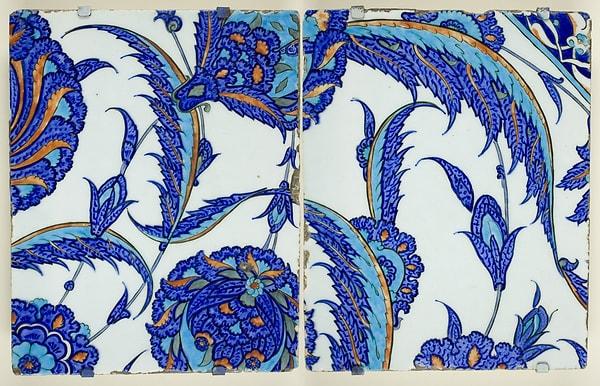
Iznik pottery, named after the town of Iznik in northwestern Anatolia, reached its zenith during the 16th century under the Ottoman Empire. Known for its distinctive cobalt blue, turquoise, and rich shades of red, Iznik ceramics feature intricate floral motifs, geometric patterns, and calligraphic inscriptions. The vibrant colors and meticulous designs make Iznik pottery a true symbol of Ottoman grandeur and artistic finesse.
Kutahya Pottery: A Kaleidoscope of Colors and Motifs
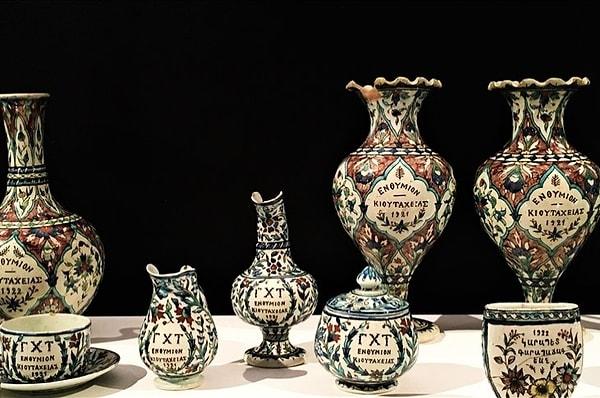
Originating in the city of Kutahya, located in western Anatolia, Kutahya pottery has its own distinct style. Renowned for its rich and varied color palette, Kutahya ceramics feature shades of green, yellow, blue, and red, often embellished with intricate floral patterns, arabesques, and mythological motifs. The delicate brushwork and lively designs make Kutahya pottery a visual feast for the eyes.
Traditional Techniques: Mastering the Craft
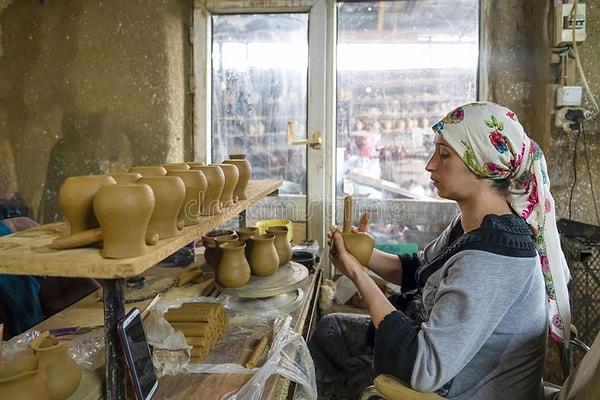
The creation of Turkish pottery involves a meticulous process that demands skill, precision, and patience. Traditional techniques, such as hand throwing, hand painting, and underglaze and overglaze decoration, are still employed by master craftsmen today. The use of natural pigments and glazes derived from minerals and plant extracts adds an organic touch to the art form, enhancing its authenticity and connection to nature.
Cini Tiles: A Storytelling Medium
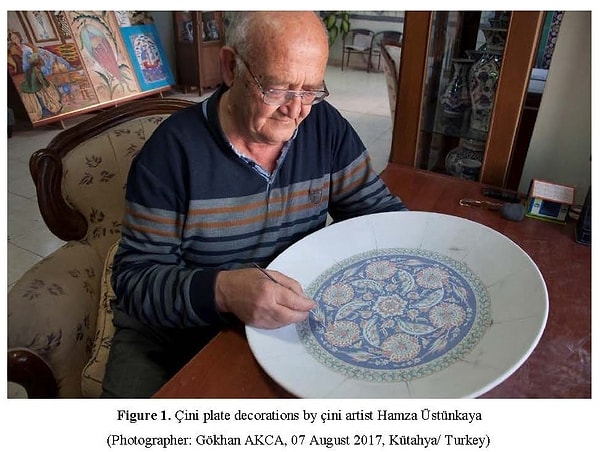
Cini tiles, also known as Turkish ceramic tiles, have adorned the walls of palaces, mosques, and architectural wonders throughout Turkey for centuries. These intricately hand-painted tiles depict a myriad of motifs, including floral designs, geometric patterns, and scenes from mythology and daily life. Cini tiles not only add aesthetic beauty to architectural structures but also serve as a visual narrative, showcasing the cultural and historical narratives of the region.
Modern Adaptations: Innovations and Contemporary Expressions
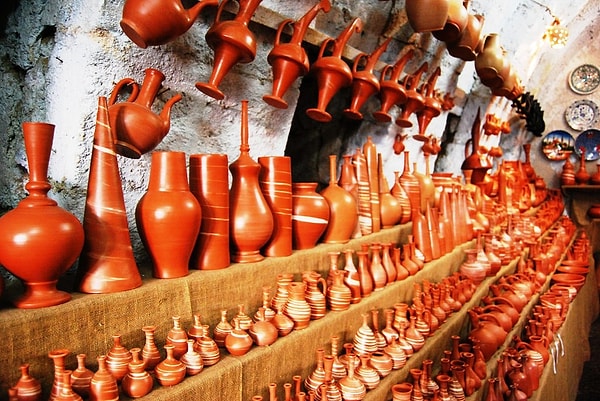
While rooted in tradition, Turkish pottery and ceramics have also embraced modern influences, allowing for experimentation and contemporary interpretations. Today, artisans and ceramicists blend traditional techniques with modern designs, creating unique pieces that merge the past and the present. These innovative adaptations have opened up new avenues for the art form, attracting a diverse audience and ensuring its continued relevance in the modern world.
Cultural Significance and Global Appreciation
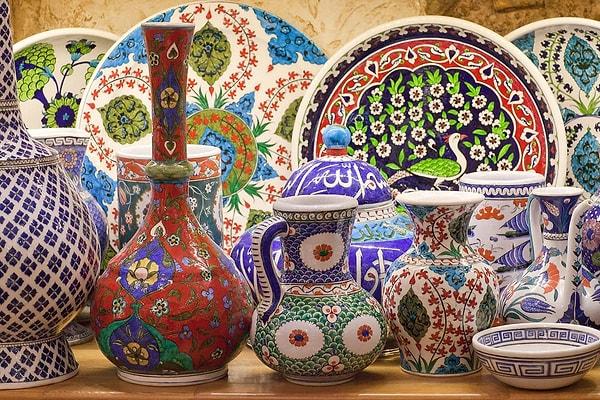
Turkish pottery and ceramics have transcended geographical boundaries, earning admiration and recognition worldwide. The art form has become an essential component of Turkish cultural identity, symbolizing the country's rich history, artistic heritage, and craftsmanship. Turkish pottery is highly sought after by collectors, museums, and art enthusiasts, who value its cultural significance and aesthetic allure.
Preserving and Promoting Turkish Pottery
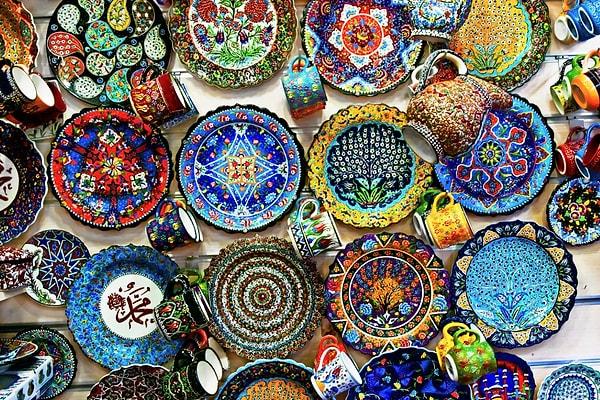
To safeguard this treasured art form, Turkey has established museums, workshops, and educational programs dedicated to preserving and promoting Turkish pottery and ceramics. These institutions play a vital role in nurturing talent, passing down traditional techniques, and fostering innovation, ensuring that this cultural legacy continues to thrive for generations to come.
Keşfet ile ziyaret ettiğin tüm kategorileri tek akışta gör!


Send Comment